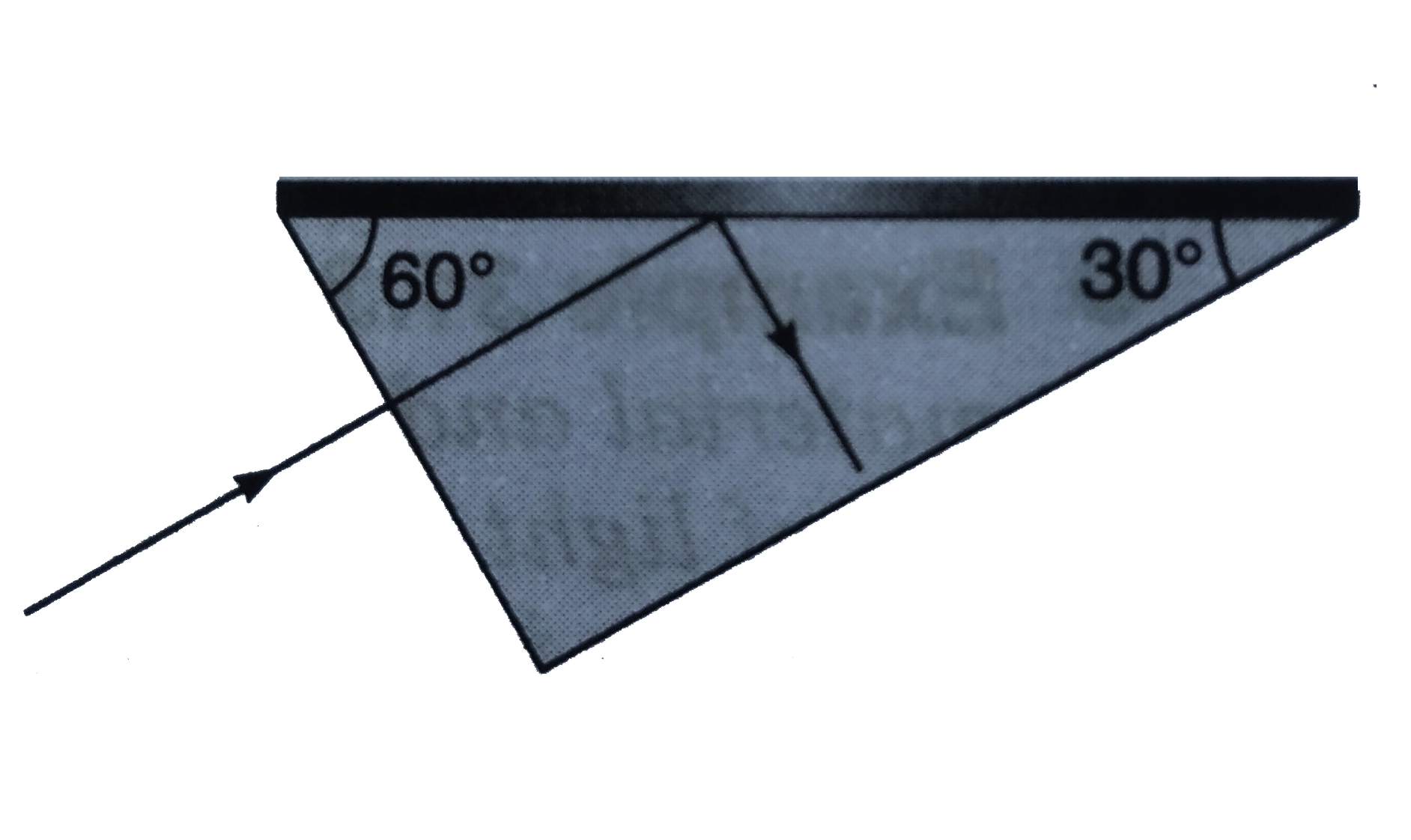The refractive index of a prism is 2. this prism can have a maximum refracting angle of
90∘
60∘
45∘
30∘
The correct Answer is:B
To find the maximum refracting angle of a prism with a refractive index of 2, we can follow these steps:
Step 1: Understand the relationship between the refractive index and the critical angle
The critical angle (θc) for a prism can be determined using the formula:
sin(θc)=1μ
where μ is the refractive index of the prism.
Step 2: Substitute the given refractive index
Given that the refractive index μ=2, we can substitute this value into the formula:
sin(θc)=12
Step 3: Calculate the critical angle
To find the critical angle, we take the inverse sine:
θc=sin−1(12)
This gives us:
θc=30∘
Step 4: Relate the critical angle to the maximum refracting angle
For a prism, the maximum refracting angle A must be such that the angle of incidence at the first surface is less than or equal to the critical angle. The relationship between the angles is given by:
A=r1+r2
where r1 and r2 are the angles of refraction at the two faces of the prism.
Step 5: Determine the maximum value for angle A
Since the maximum angle of incidence at the first face cannot exceed the critical angle, we have:
A≤2×θc
Thus, substituting the critical angle:
A≤2×30∘=60∘
Conclusion
Therefore, the maximum refracting angle A of the prism can be:
60∘
The critical angle (θc) for a prism can be determined using the formula:
sin(θc)=1μ
where μ is the refractive index of the prism.
Given that the refractive index μ=2, we can substitute this value into the formula:
sin(θc)=12
To find the critical angle, we take the inverse sine:
θc=sin−1(12)
This gives us:
θc=30∘
For a prism, the maximum refracting angle A must be such that the angle of incidence at the first surface is less than or equal to the critical angle. The relationship between the angles is given by:
A=r1+r2
where r1 and r2 are the angles of refraction at the two faces of the prism.
Since the maximum angle of incidence at the first face cannot exceed the critical angle, we have:
A≤2×θc
Thus, substituting the critical angle:
A≤2×30∘=60∘
Therefore, the maximum refracting angle A of the prism can be:
60∘
Topper's Solved these Questions
- RAY OPTICSBOOK - DC PANDEY ENGLISHCHAPTER - RAY OPTICSEXERCISE - A. Only one option is correct (JEE Advance)
73 Videos
- RAY OPTICSBOOK - DC PANDEY ENGLISHCHAPTER - RAY OPTICSEXERCISE - B. More than one option is correct
20 Videos
- PROPERTIES OF MATTERBOOK - DC PANDEY ENGLISHCHAPTER - PROPERTIES OF MATTEREXERCISE - Integer
8 Videos
- ROTATIONBOOK - DC PANDEY ENGLISHCHAPTER - ROTATIONEXERCISE - (C) Chapter Exercises
39 Videos
Similar Questions
Light is incident normally on the short face of a 30∘−60∘−90∘ prism. A liquid is poured on the hypotenuse of the prism. If the refractive index of the prism is √3, find the maximum refractive index of the liquid so that light is totally reflected.

View SolutionThe refractive index of the material of a prism is 1.5 and its refracting angle is 6º. Find the deviation produced by the prism for a small angle of incidence.
View SolutionThe refractive index of the material of a prism is 1.5 and its refracting angle is 6º. Find the deviation produced by the prism for a small angle of incidence.
View SolutionThe refractive index of a prism is μ. Find the maximum angle of the prism for which a ray incident on it will be transmitted through other face without total internal reflection.
View SolutionThe refractive index of a prism for a monochromatic wave is √2 and its refracting angle is 60∘ for minimum deviation, the angle of indidence will be
View SolutionThe refractive index of a prism for a monochromatic wave is √2 and its refracting angle is 60∘ for minimum deviation, the angle of indidence will be
View SolutionA ray of light is incident on the hypotenuse of a right-angled prism after travelling parallel to the base inside the prism. If μ is the refractive index of the material of the prism, the maximum value of the base angle for which light is totally reflected from the hypotenuse is
View SolutionA flint glass prism and a crown glass prism are to be combined in such a way that the deviation of the mean ray is zero. The refractive index of flint and crown glasses for the mean ray are 1.620 and 1.518 respectively. If the refracting angle of the flint prism is 6.0∘, what would be the refracting angle of the crown prism ?
View SolutionThe refractive index of the material of a prism of refracting angle 45∘ is 1.6 for a certain monochromatic ray. What will be the minimum angle of incidence of this ray on the prism so that no TIR takes place as the ray comes out of the prism.
View SolutionRefractive index of an equilateral prism is √2.
View Solution
